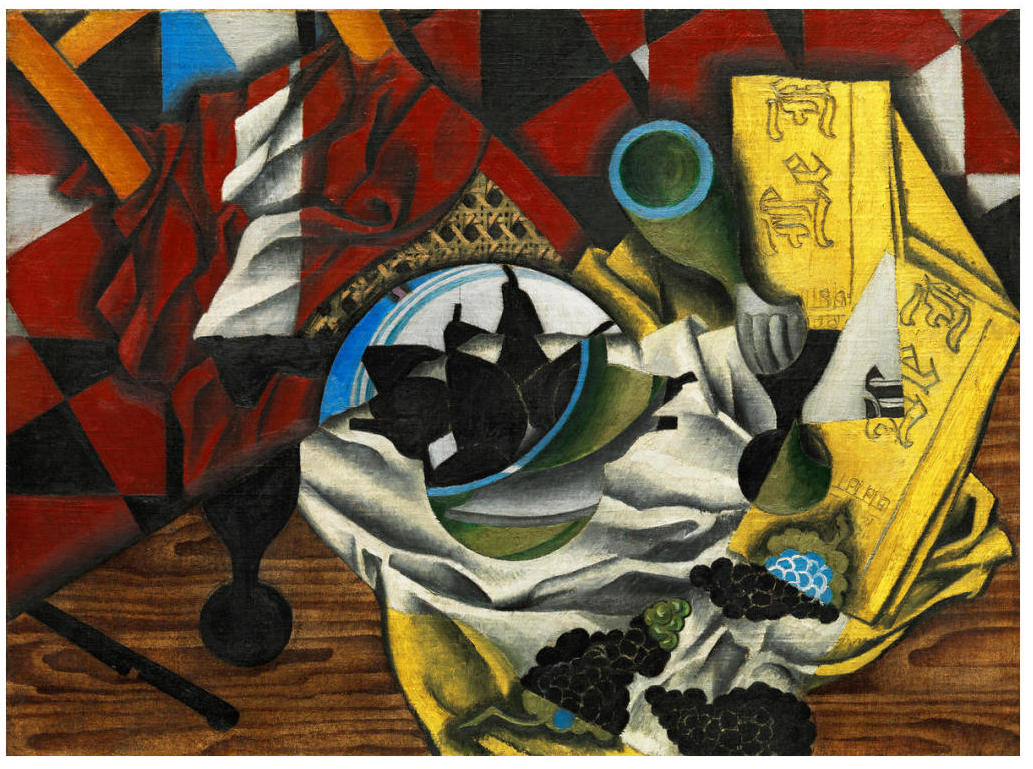A CARAFE, THAT IS A BLIND GLASS
By:
May 24, 2024
A series dedicated to poems, published c. 1900–1935, the Radium Age sf-adjacent themes of which include: dystopia and utopia, far-out mathematics and the fourth dimension, Afro-futurism, catastrophe, future war, new technologies, scientific breakthrough, dehumanization, cosmic awe, disenchantment and unseen forces, unknowable aliens and singularity. Research and selection by Joshua Glenn; thematic index here.

A kind in glass and a cousin, a spectacle and nothing strange a single hurt color and an arrangement in a system to pointing. All this and not ordinary, not unordered in not resembling. The difference is spreading.
— from Gertrude Stein’s collection Tender Buttons (1914).
The collection of consists of prose-poems covering the everyday mundane — as perceived from multiple perspectives through the subjectivity of the author (or the narrator, anyway). Its first poem, “A Carafe, That Is a Blind Glass,” is arguably its most famous — and is often cited as one of the quintessential works of “Cubist literature.” Stein, whose portrait was being painted by Picasso while she was writing Tender Buttons, certainly is determined to reveal each of her subject’s essences through multiple perspectives.
Marjorie Perloff: In descriptions like the one found in “A Carafe, That Is a Blind Glass,” objects “not only are fragmented and decomposed as they are in cubist still-life; they also serve as false leads, forcing the reader to consider the very nature of naming.” These descriptions thus call our attention to the process of recognizing an object — and to the role of language in that process. Stein’s manipulation of syntax, while seemingly random and senseless, is in this interpretation a strategy intended to shake up the reader’s preconceived notions of the subject.
Fun fact: Stein’s career started in the emergent field of the brain sciences, first at Radcliffe College, then at the Johns Hopkins School of Medicine. The questions that plagued her instructor, Willian James — What is consciousness? How does consciousness relate to the whole personality? Is consciousness continuous or discontinuous? — plagued her too.
This essay looks interesting. Also this one, and this one.
PS: Carly Sitrin writing about this poem: “A basic description of Cubism is the destruction, dissection, and reassembling of an object with the intention of capturing its essence. […] At its core, Cubism operates on the notion that an object is not the sum of its parts, but rather every atom of an object contains within it the essence of the whole, and therefore can be rearranged at will while still maintaining the overall sense of the thing.”
RADIUM AGE PROTO-SF POETRY: Stephen Spender’s THE PYLONS | George Sterling’s THE TESTIMONY OF THE SUNS | Archibald MacLeish’s EINSTEIN | Thomas Thornely’s THE ATOM | C.S. Lewis’s DYMER | Stephen Vincent Benét’s METROPOLITAN NIGHTMARE | Robert Frost’s FIRE AND ICE | Aldous Huxley’s FIFTH PHILOSOPHER’S SONG | Sara Teasdale’s “THERE WILL COME SOFT RAINS” | Edith Södergran’s ON FOOT I HAD TO… | Robert Graves’s WELSH INCIDENT | Nancy Cunard’s ZEPPELINS | D.H. Lawrence’s WELLSIAN FUTURES | & many more.
